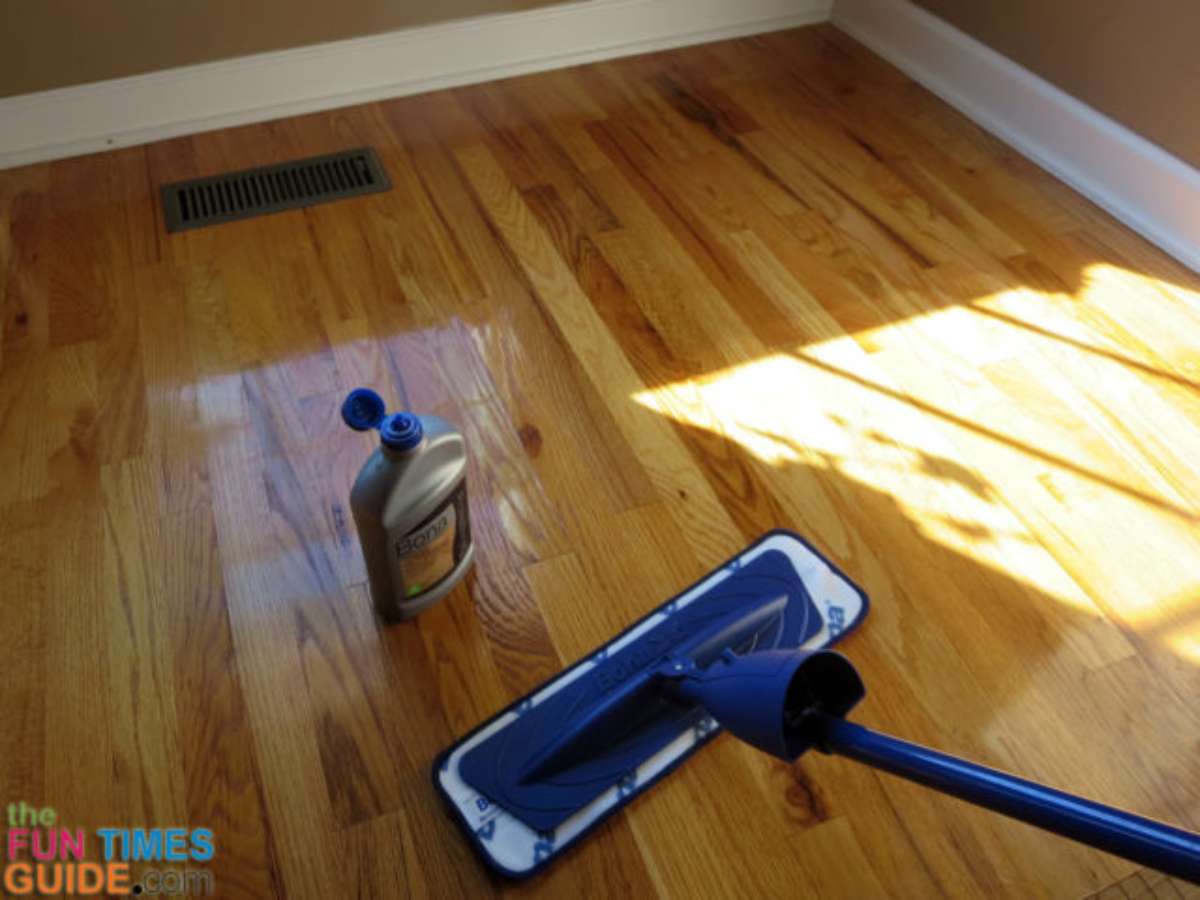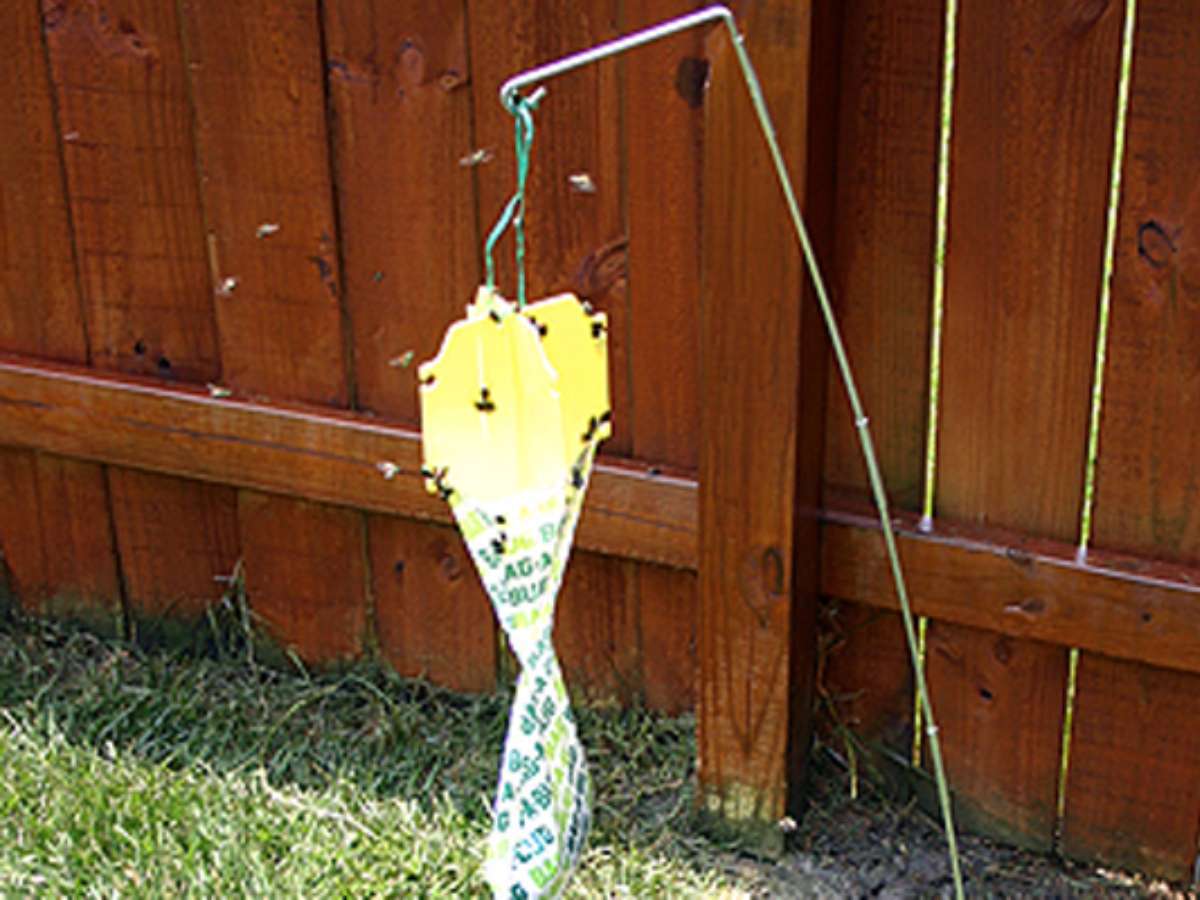Most people are unaware of the fact that Christmas tree mold is a real thing.
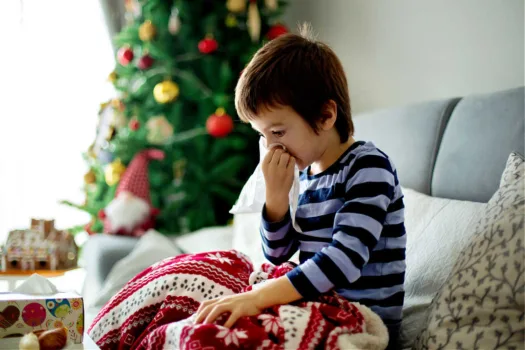
It grows on live Christmas trees as well as artificial ones. It also grows on live Christmas wreaths — and artificial ones, too.
In fact, it has become such an issue in recent years that the symptoms associated with Christmas tree mold have been given a medical term: Christmas Tree Syndrome.
This year especially, with the wet weather that has taken place in the areas where Christmas trees are grown, Christmas Tree Syndrome is even more prevalent than usual.
In the U.S., there are approximately 15,000 farms growing Christmas trees on a total of 350,000 acres across 50 states. The top Christmas tree producing states are: Michigan, North Carolina, Oregon, Pennsylvania, Wisconsin, and Washington.
~National Christmas Tree Association
What Is Christmas Tree Syndrome?
Christmas Tree Syndrome is a seasonal illness that varies in degree and intensity.
It is caused by live Christmas trees (and Christmas wreaths, too) releasing mold spores within an enclosed indoor space.
In most cases, Christmas Tree Syndrome has only minor side-effects and symptoms. However, it can significantly worsen respiratory problems for:
- Asthmatics
- Anyone with severe allergies
- Those with weakened immune systems
In extreme cases, Christmas Tree Syndrome can lead to pneumonia – which can be life-threatening.
How Does Christmas Tree Mold Occur In The First Place?
The time between when a tree has been cut down (and thus, starts to decay) and when it arrives in your home is surprising to most people.
The Christmas trees that we use to decorate their homes for the holidays have been pre-cut weeks – if not months – ahead of time. In most cases, Christmas trees are cut down to be bundled and sold way before Thanksgiving!
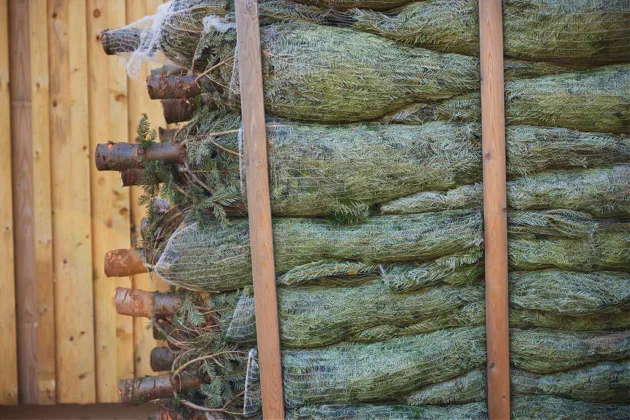
We ship trees out of Oregon and Washington primarily, and greens for wreaths start moving in October. Then trees for Hawaii are loaded into containers in the first week of November, followed by trees for the Midwest and the East Coast. The week before Thanksgiving is the busiest time of year, by far. That’s when we move loads to Texas, then California and other Western states. Everyone wants fresh trees on their lots on the day after Thanksgiving.
~DAT Freight & Analytics
It is during this process – when the live trees are cut down, placed into piles, tightly wrapped for transport, and then packed into trucks to be delivered to Christmas tree sellers all across the country – that moisture is likely to come in contact with those trees.
Unfortunately, it is very likely that moisture will seep into those tree bundles at some point…
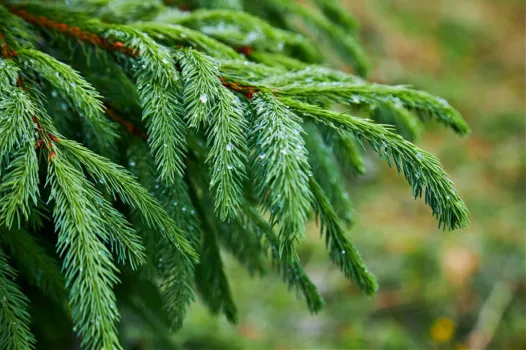
- …while the trees are being chopped down (maybe right before it starts to rain, after it has rained, or in a damp & humid climate)
- …during the process of being bundled (whether in outdoor facilities or indoor ones, simply moving a tree from one temperature to another can create moisture — in the form of condensation — on the tree itself).
- …as the trees are being added to or removed from trucks (if there’s mist or humidity in the air, or it happens to be full on raining during this time)
- …the entire time the trees are for sale on a Christmas tree lot (rain, snow, and humidity are likely to affect many of the trees during this time)
Combine that with the tight bundling of the trees – which facilitates their being loaded, transported, and unloaded into trucks and onto Christmas tree lots – and you have an environment that is ideal for mold to grow.
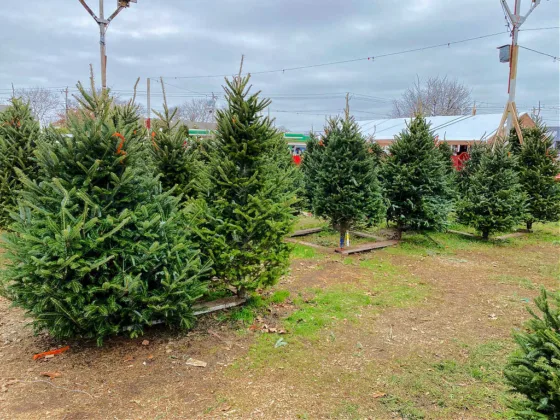
Many live trees sold today have mold spores already existing on the pine needles and the bark.
Once the tree gets in your home, the mold on the tree begins to reproduce.
Where’s The Proof?
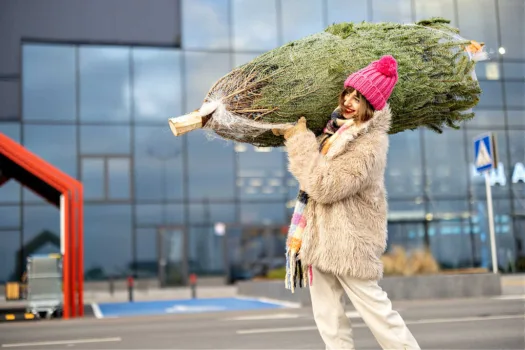
It’s a fact that Christmas trees are coniferous softwoods – and they naturally hold a lot of moisture.
Add to that fact a Christmas tree’s natural slow decay during the holiday season, and it’s practically inevitable that mold will begin to form – especially within a warm household environment.
The heat inside your home plus any condensation in the air (humidity) creates the perfect environment for mold spores to grow. Hot lights and central heating also facilitate mold growth.
According to the American Christmas Tree Association, studies show that Christmas trees can carry about 50 different types of mold.
Once a tree with mold is placed inside your home, the mold spores begin to reproduce. And the longer the tree stays in your home, the higher the mold spore count goes. Your family (and pets) continue to breathe in that mold.
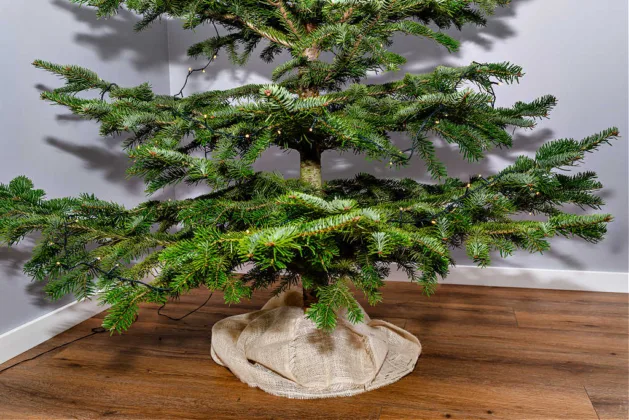
In one study, researchers closely measured mold counts in a room that contained one live Christmas tree. They found that the longer the tree remained in the house, the higher the mold spore count grew. During the first 3 days that the tree was indoors, the count of mold spores in the air hovered around 800 spores per cubic meter of air. But on day 4, the spore counts began to rise – and they continued to increase each day thereafter. Within 2 weeks, the mold spore counts had reached 5,000 per cubic meter of air.
Spore counts of less than 1,000 are considered normal. Spore counts higher than 700 per cubic meter indicate that mold growth is occurring. While there are no state or federal standards regarding acceptable indoor mold spore levels, the World Health Organization considers indoor concentrations greater than 500 spores per cubic meter to be unacceptable.
~IQ Air
How To Get Rid Of Christmas Tree Mold
The risk of Christmas Tree Syndrome is NOT only associated with fresh, live trees and wreaths.

Christmas tree mold can grow on artificial trees and wreaths that have been stored in damp or humid spaces like attics and basements, as well.
There are 3 good ways to get rid of Christmas tree mold from live and artificial trees and wreaths.
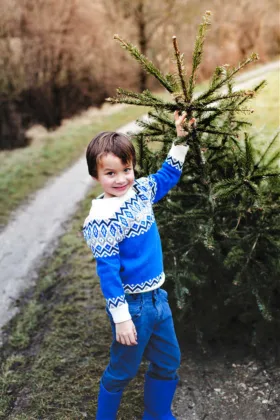
To remove mold from a tree or wreath, use ONE of these methods:
- Spray the tree’s stems and pine needles thoroughly with a vinegar & water solution (1 part vinegar and 1 part water in a spray bottle) before bringing it inside your home. NOTE: You should also wipe down the tree trunk using the same vinegar & water solution. Or, combine 1 cup of bleach with 1 quart of water and use that instead.
- Less effective, but better than nothing, is to use fresh water from the hose to rinse the tree thoroughly before bringing it indoors.
- At the very least, you should blow off the tree well using an air compressor or a leaf blower. You won’t have to wait for the tree to dry before bringing it indoors this way.
The key is to make sure the tree is completely dry before bringing it into your house!
How To Prevent Christmas Tree Mold
- Once the Christmas tree is inside your home, it’s best to only leave it up for 3 to 4 days max – to reduce the risk of mold growing inside your house.
- It would also be wise to run one or more air purifiers in the room where your Christmas tree is set up.
- Try to keep your home’s humidity level low – below 60% is good; below 45% would be ideal.
The Bottom Line
Since elevated mold spore levels associated with live Christmas trees are a serious hazard, anyone with allergies and/or a weakened immune system should consider keeping a live tree indoors no longer than 3 days. Any signs of increased allergies, coughing, and breathing difficulty could signify the type of tree mold that is associated with Christmas Tree Syndrome.


